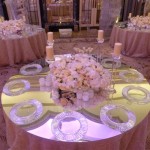```html
Hang A Mirror: A Comprehensive Guide
Hanging a mirror can significantly enhance a room's aesthetic appeal, creating the illusion of more space and reflecting light to brighten the environment. Whether it's a small decorative mirror or a large statement piece, the process of hanging it securely and effectively requires careful planning and execution. This article provides a detailed guide to hanging a mirror, covering various aspects from preparation to installation, ensuring a successful and visually pleasing result.
Before commencing the installation process, it is crucial to gather the necessary tools and materials. This preparation stage minimizes interruptions and ensures a smooth workflow. The required tools typically include a measuring tape, a level, a pencil, a drill with appropriate drill bits for the wall type, a stud finder (if applicable), screws or picture-hanging hooks suitable for the mirror's weight, and safety glasses. The choice of hanging hardware depends on the weight of the mirror and the wall material. For heavier mirrors, it is recommended to use screws anchored into wall studs for maximum stability. For lighter mirrors, appropriate picture-hanging hooks may suffice, but it is essential to ensure they are rated for the mirror's weight.
1. Planning and Preparation: Key Considerations
The first step involves determining the optimal location for the mirror. Consider the room's layout, existing furniture, and desired effect. Mirrors are often placed in entryways, hallways, bathrooms, or living rooms. When selecting a location, avoid placing the mirror where it will directly reflect unpleasant views or clutter. Instead, aim to reflect light and create a sense of spaciousness. Furthermore, the mirror’s placement should complement the existing décor and architectural features of the room.
Once the location is chosen, measure the desired height for the mirror. A general guideline is to position the center of the mirror at eye level. However, this can be adjusted based on individual preferences and the specific characteristics of the room. Mark the chosen height on the wall using a pencil and a level. Extend this mark horizontally to create a reference line for aligning the top edge of the mirror. Before drilling any holes, it is crucial to identify the wall type. Common wall types include drywall, plaster, and concrete. Each wall type requires different drilling techniques and anchoring methods. Drywall is the most common wall type and generally requires drywall anchors to provide sufficient support for the screws. Plaster walls can be more challenging to work with and may require specialized anchors or a masonry drill bit if hitting brick or stone behind the plaster. Concrete walls necessitate the use of a hammer drill and concrete screws.
If the mirror is heavy, utilize a stud finder to locate wall studs. Wall studs are vertical beams that provide significant structural support. Screwing directly into a wall stud offers the most secure method for hanging heavy objects. Mark the location of the stud on the wall and ensure the mirror's mounting hardware aligns with the stud. If studs are not available in the desired location, use appropriate wall anchors to distribute the weight of the mirror. Different types of wall anchors, such as drywall anchors, molly bolts, and toggle bolts, offer varying levels of support. Select an anchor that is rated for the mirror's weight and suitable for the wall type.
Before proceeding with drilling, double-check all measurements and markings to ensure accuracy. This step prevents unnecessary holes and potential damage to the wall. Use a level to confirm that the reference line is perfectly horizontal. Slight deviations can result in a crooked mirror. Wear safety glasses to protect the eyes from dust and debris generated during the drilling process.
2. Installation Techniques Based on Mirror Weight and Wall Type
The installation process varies depending on the weight of the mirror and the chosen hanging method. For lighter mirrors that can be supported by picture-hanging hooks, simply insert the hooks into the wall at the marked location. Ensure the hooks are securely embedded and can bear the mirror's weight. For heavier mirrors that require screws and anchors, pre-drill pilot holes at the marked locations. The size of the pilot hole should be slightly smaller than the diameter of the screw. This facilitates easier screw insertion and prevents the wall from cracking. Insert the chosen wall anchors into the pilot holes. Follow the manufacturer's instructions for installing each type of anchor. Some anchors require tapping into the wall with a hammer, while others need to be tightened with a screwdriver.
Once the anchors are in place, align the mirror's mounting hardware with the anchors. Insert the screws through the mounting hardware and into the anchors. Tighten the screws until they are snug but not overtightened. Overtightening can damage the wall or the mirror's frame. Use a level to ensure the mirror is perfectly horizontal before fully tightening the screws. Make any necessary adjustments to achieve a level position. After the mirror is securely mounted, inspect the installation to ensure it is stable and secure. Gently tug on the mirror to verify that it is firmly attached to the wall. If there is any movement or instability, re-tighten the screws or consider using stronger anchors.
When hanging a mirror in a bathroom, it is essential to consider the humidity and moisture levels. Use water-resistant anchors and screws to prevent corrosion and ensure long-lasting performance. Consider applying a sealant around the edges of the mirror to prevent moisture from seeping behind it. For mirrors with adhesive backing, clean the wall surface thoroughly before applying the adhesive. Ensure the wall is free of dust, grease, and other contaminants. Apply the adhesive evenly to the back of the mirror and press it firmly against the wall. Use a level to ensure the mirror is aligned correctly.
When working with plaster walls, exercise caution to avoid cracking or damaging the plaster. Use a slow drilling speed and apply gentle pressure. Consider using a specialized plaster anchor designed to minimize damage to the wall. If encountering resistance while drilling, stop and reassess the situation. There may be a hidden pipe or wire behind the wall. If unsure, consult with a professional before proceeding.
3. Additional Tips and Considerations for Optimal Results
Consider the placement of lighting fixtures in relation to the mirror. Positioning a light source directly above the mirror can create glare and shadows. Instead, aim for indirect lighting or side lighting to illuminate the mirror evenly. Before hanging a large or heavy mirror, ask for assistance from another person. This makes the process safer and easier. When handling mirrors, wear gloves to protect the hands from sharp edges. Dispose of any broken glass or debris safely and responsibly. Clean the mirror with a glass cleaner and a soft cloth to remove any fingerprints or smudges. Avoid using abrasive cleaners that can scratch the mirror's surface. Regularly inspect the mirror's mounting hardware to ensure it remains secure. Tighten any loose screws or replace worn-out anchors as needed.
The size and shape of the mirror should be proportionate to the size and shape of the room. A large mirror can overwhelm a small room, while a small mirror can get lost in a large room. Consider the style of the mirror and how it complements the existing décor. A modern mirror can add a touch of contemporary flair to a room, while a vintage mirror can create a sense of timeless elegance. The frame of the mirror can also play a significant role in its overall aesthetic appeal. Choose a frame that complements the room's color scheme and style.
When hanging multiple mirrors in a room, create a cohesive and balanced arrangement. Avoid overcrowding the wall with too many mirrors. Consider grouping mirrors of different sizes and shapes to create an interesting visual effect. Use a consistent spacing between the mirrors to create a sense of order and harmony. When hanging a mirror above a piece of furniture, such as a console table or a fireplace mantel, ensure the mirror is centered above the furniture and is proportionate to its size. The bottom edge of the mirror should be positioned a few inches above the furniture. This creates a balanced and visually appealing composition.
In conclusion, hanging a mirror involves several steps, from initial planning to final installation. By carefully considering the weight of the mirror, the wall type, and the desired location, one can achieve a secure and aesthetically pleasing result. Adhering to safety precautions and using the appropriate tools and materials are crucial for a successful installation. With attention to detail and adherence to these guidelines, hanging a mirror can transform a room, creating a brighter, more spacious, and visually appealing environment.
```
Easiest Way To Hang A Mirror

How To Hang A Large Or Heavy Mirror

How To Hang A Mirror Home

Picture Wire Strung Between Two D Rings Attached To The Back Of A Frame Hanging Mirror Heavy
How To Hang A 100 Pound Mirror On Drywall Quora

How To Hang A Heavy Mirror Or Picture True Value

How To Hang A Mirror

How To Hang A Frameless Mirror On The Wall With Pictures

Tips On How High To Hang A Mirror Interior Design Blog Hadley Court

Hanging A Mirror Over Another Decor To Adore








